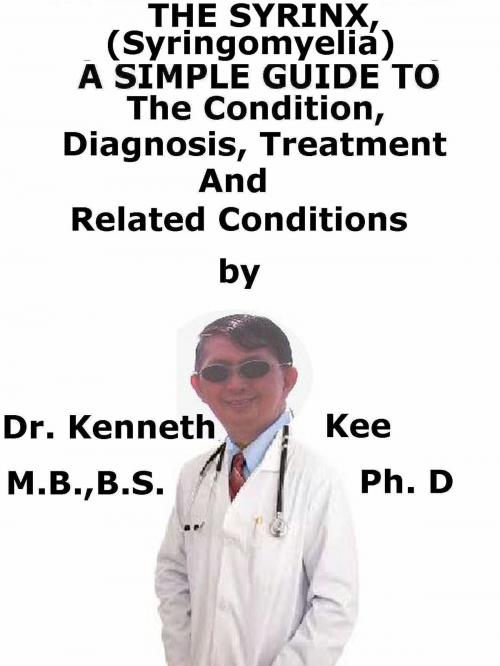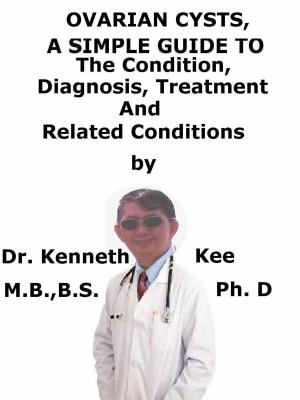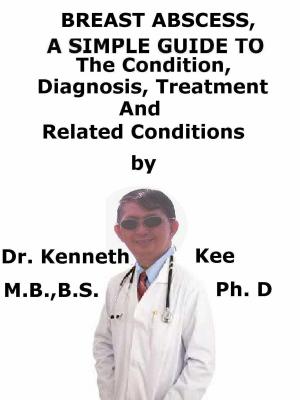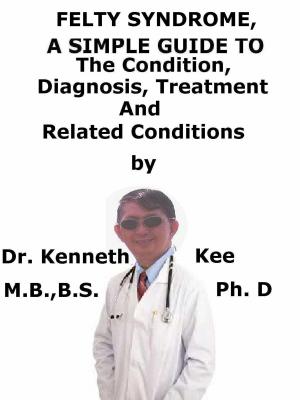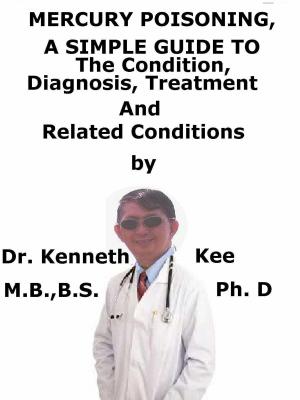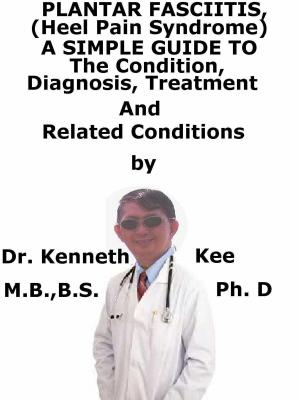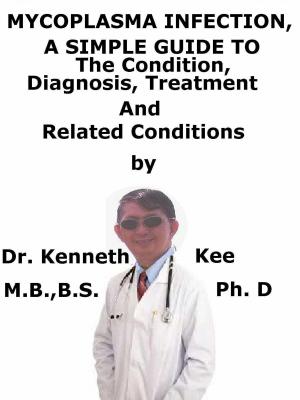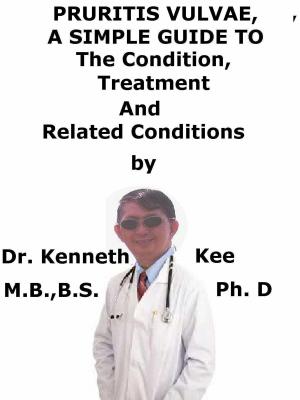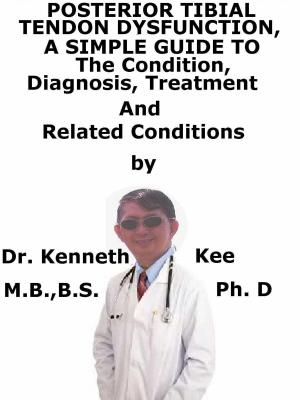The Syrinx, (Syringomyelia) A Simple Guide To The Condition, Diagnosis, Treatment And Related Conditions
Nonfiction, Health & Well Being, Health, Ailments & Diseases, Nervous System & the Brain, Medical, Specialties, Internal Medicine, Neurology| Author: | Kenneth Kee | ISBN: | 9781370263080 |
| Publisher: | Kenneth Kee | Publication: | August 8, 2017 |
| Imprint: | Smashwords Edition | Language: | English |
| Author: | Kenneth Kee |
| ISBN: | 9781370263080 |
| Publisher: | Kenneth Kee |
| Publication: | August 8, 2017 |
| Imprint: | Smashwords Edition |
| Language: | English |
This is about the Syrinx a medical disorder and not the Sphinx found in Egypt.
What is the Syrinx?
The Syrinx is a cyst-like collection of cerebrospinal fluid (CSF) that forms in the spinal cord.
Over time, it injures the spinal cord.
This cyst expands and elongates over time, destroying a portion of the spinal cord from its center and expanding outward.
As a syrinx enlarges it causes pressures and damages nerve fibers that transmit information from the brain to the extremities.
Damage to the spinal cord often leads to syringomyelia, a progressive weakness in the arms and legs, stiffness in the back, shoulders, arms, or legs and chronic severe pain.
Other symptoms may be headaches, a loss of the ability to feel extremes of hot or cold (especially in the hands), and loss of bladder and other functions.
Each patient experiences a different combination of symptoms depending on where in the spinal cord the syrinx forms and how far it extends.
Signs of the Syringomyelia tend to develop slowly, even though sudden onset may occur with coughing or straining.
Many disorders share the early symptoms of Syringomyelia which also can occur in link with other disorders.
The spinal fluid buildup may be caused by:
1. Birth defects (especially Chiari malformation, in which part of the brain pushes down onto the spinal cord at the base of the skull)
2. Spinal cord trauma
3. Tumors of the spinal cord
Generally, there are two forms of the Syrinx.
1. In most cases, the disorder is related to an abnormality of the brain called a Chiari I malformation.
This anatomical anomaly (syrinx) produces the lower part of the cerebellum to budge from its normal location in the back of the head into the cervical or neck part of the spinal canal.
A syrinx may then develop in the cervical region of the spinal cord.
Because of the link that was once thought to be present between the brain and spinal cord in this form of the syrinx, doctors occasionally refer to it as communicating syringomyelia.
Symptoms usually begin between the ages of 25 and 40 and may worsen with straining or any activity that causes CSF pressure to fluctuate suddenly.
Some people with this form of the disorder also have hydrocephalus in which CSF accumulates in the brain, or a condition called arachnoiditis, in which a covering of the spinal cord (the arachnoid membrane) is inflamed.
2. The second major form of the Syrinx occurs as a complication of trauma, meningitis, hemorrhage, a tumor or arachnoiditis.
Here the syrinx or cyst develops in a segment of the spinal cord damaged by one of these conditions.
The syrinx then starts to expand.
This is sometimes referred to as non-communicating syringomyelia.
If there are symptoms, they may be:
1. Headache
2. Loss of muscle mass (wasting, atrophy), often in the arms and hands
3. Spasms or tightness in the leg or hand and arm muscles
4. Muscle function loss, loss of ability to use arms or legs
Diagnosis:
The doctor will perform a physical exam and ask about the symptoms, focusing on the nervous system.
Tests that may be done are:
1. MRI of the head and spine
2. Spinal CT scan with myelogram
The purposes of treatment are to stop the spinal cord damage from getting worse and to improve function.
Surgery may be needed to relieve pressure in the spinal cord.
Physical therapy may be needed to improve muscle function.
Surgery is usually recommended for individuals with the Syrinx.
By draining syrinx fluid or CSF, a shunt can halt the progression of symptoms and relieve pain, headache, and tightness.
Without correction, symptoms generally continue.
An alternate operation is to place a shunt in the syrinx which requires a hole to be made in the spinal cord.
TABLE OF CONTENT
Introduction
Chapter 1 The Syrinx
Chapter 2 Causes
Chapter 3 Symptoms
Chapter 4 Diagnosis
Chapter 5 Treatment
Chapter 6 Prognosis
Chapter 7 Meningitis
Chapter 8 Encephalitis
Epilogue
This is about the Syrinx a medical disorder and not the Sphinx found in Egypt.
What is the Syrinx?
The Syrinx is a cyst-like collection of cerebrospinal fluid (CSF) that forms in the spinal cord.
Over time, it injures the spinal cord.
This cyst expands and elongates over time, destroying a portion of the spinal cord from its center and expanding outward.
As a syrinx enlarges it causes pressures and damages nerve fibers that transmit information from the brain to the extremities.
Damage to the spinal cord often leads to syringomyelia, a progressive weakness in the arms and legs, stiffness in the back, shoulders, arms, or legs and chronic severe pain.
Other symptoms may be headaches, a loss of the ability to feel extremes of hot or cold (especially in the hands), and loss of bladder and other functions.
Each patient experiences a different combination of symptoms depending on where in the spinal cord the syrinx forms and how far it extends.
Signs of the Syringomyelia tend to develop slowly, even though sudden onset may occur with coughing or straining.
Many disorders share the early symptoms of Syringomyelia which also can occur in link with other disorders.
The spinal fluid buildup may be caused by:
1. Birth defects (especially Chiari malformation, in which part of the brain pushes down onto the spinal cord at the base of the skull)
2. Spinal cord trauma
3. Tumors of the spinal cord
Generally, there are two forms of the Syrinx.
1. In most cases, the disorder is related to an abnormality of the brain called a Chiari I malformation.
This anatomical anomaly (syrinx) produces the lower part of the cerebellum to budge from its normal location in the back of the head into the cervical or neck part of the spinal canal.
A syrinx may then develop in the cervical region of the spinal cord.
Because of the link that was once thought to be present between the brain and spinal cord in this form of the syrinx, doctors occasionally refer to it as communicating syringomyelia.
Symptoms usually begin between the ages of 25 and 40 and may worsen with straining or any activity that causes CSF pressure to fluctuate suddenly.
Some people with this form of the disorder also have hydrocephalus in which CSF accumulates in the brain, or a condition called arachnoiditis, in which a covering of the spinal cord (the arachnoid membrane) is inflamed.
2. The second major form of the Syrinx occurs as a complication of trauma, meningitis, hemorrhage, a tumor or arachnoiditis.
Here the syrinx or cyst develops in a segment of the spinal cord damaged by one of these conditions.
The syrinx then starts to expand.
This is sometimes referred to as non-communicating syringomyelia.
If there are symptoms, they may be:
1. Headache
2. Loss of muscle mass (wasting, atrophy), often in the arms and hands
3. Spasms or tightness in the leg or hand and arm muscles
4. Muscle function loss, loss of ability to use arms or legs
Diagnosis:
The doctor will perform a physical exam and ask about the symptoms, focusing on the nervous system.
Tests that may be done are:
1. MRI of the head and spine
2. Spinal CT scan with myelogram
The purposes of treatment are to stop the spinal cord damage from getting worse and to improve function.
Surgery may be needed to relieve pressure in the spinal cord.
Physical therapy may be needed to improve muscle function.
Surgery is usually recommended for individuals with the Syrinx.
By draining syrinx fluid or CSF, a shunt can halt the progression of symptoms and relieve pain, headache, and tightness.
Without correction, symptoms generally continue.
An alternate operation is to place a shunt in the syrinx which requires a hole to be made in the spinal cord.
TABLE OF CONTENT
Introduction
Chapter 1 The Syrinx
Chapter 2 Causes
Chapter 3 Symptoms
Chapter 4 Diagnosis
Chapter 5 Treatment
Chapter 6 Prognosis
Chapter 7 Meningitis
Chapter 8 Encephalitis
Epilogue
